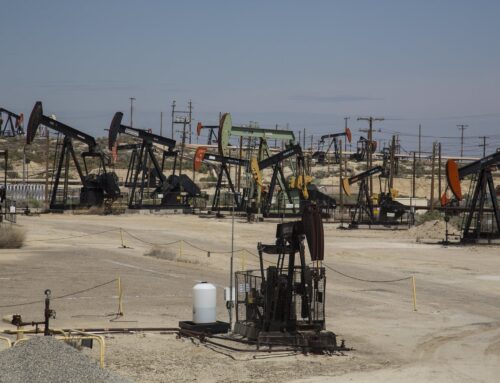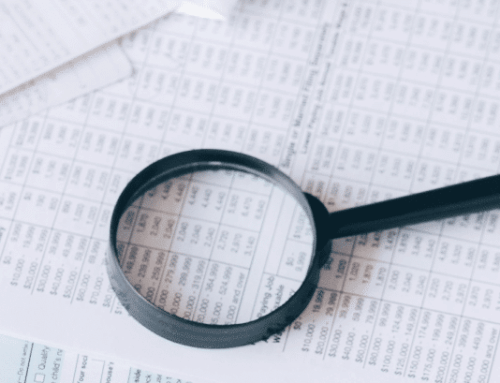In an attempt to move towards a cleaner energy future, the federal government is poised to offer billions to the aviation industry to produce and use “cleaner” fuel. Sustainable Aviation Fuel (SAF), an alternative to current jet fuel, is being hailed as the latest silver bullet in the effort to reduce carbon emissions. But lawmakers pushing for SAF to take flight need to check the fine print. A failure to ensure SAF is in fact sustainable, environmentally and fiscally, could have taxpayers paying more for the same carbon-intensive ticket.
The promise of sustainable aviation fuel is attractive. Produced from renewable or waste-derived feedstocks like used cooking oil, agricultural residues, municipal solid waste, and non-food crops such as algae, SAF is heralded as a less carbon-intensive transportation fuel. Some is already being produced. SAF went from its first test flight in 2008 to its first commercial flight, from Orlando to London, just 10 years later. Yet, SAF accounts for only a tiny fraction of the 1.6 million barrels per day (b/d) of jet fuel consumed.
This could change soon. The Biden administration has set ambitious goals: producing at least 3 billion gallons of SAF per year by 2030 and achieving 100% SAF use by 2050. This surge will be driven by incentives like tax credits and grants from programs created under the Inflation Reduction Act (IRA) and mandates like the Renewable Fuel Standard. However, whether SAF will succeed in reducing carbon emissions—and, in doing so, ensuring the wise use of our tax dollars—depends on how these new federal programs are implemented.
The Sustainable Aviation Fuel Credit, for example, subsidizes the production of aviation fuels that reduce greenhouse gas (GHG) emissions by at least 50% . When it expires at the end of 2026, it will be replaced by the Clean Fuel Production Credit, which combines several other expiring credits under a technology-neutral approach. The Joint Committee on Taxation estimates taxpayers will spend $49 million by 2025, rising to a whopping $3 billion by fiscal year 2031. And, given the history of perpetual tax extenders, taxpayers can expect more if the credit is extended.
The IRA also created a new $245 million Fueling Aviation’s Sustainable Transition Sustainable Aviation Fuel (FAST-SAF) grant program to build SAF infrastructure. Its sister program, Fueling Aviation’s Sustainable Transition Grant Program: Low-Emission Aviation Technologies (FAST-Tech), allocated an additional $47 million for low-emission aviation technologies, including at least two projects directly related to SAF.
In addition to grants and tax credit incentives for production, the government also mandates the use of biofuels. The Renewable Fuel Standard (RFS) has driven the production of “renewable fuels,” including SAF, by requiring oil and gas companies to blend increasing amounts of biofuels with gasoline and diesel each year. However, the production of advanced biofuels—like those from renewable or waste-derived feedstocks needed for SAF—have fallen significantly below intended goals and account for just a small sliver of the federal mandate. Industry lobbyists continually push for non-advanced biofuels, those produced from crops specifically grown to produce a fuel (namely corn and soybeans), to be used in place of the advanced fuels.
The rapid expansion of SAF will only benefit taxpayers if the carbon reductions justify the public investment. In theory, SAF could reduce GHG emissions from aviation, which currently account for about 2.5% of global emissions. By some estimates, SAF can reduce lifecycle GHG emissions by up to 80% compared to traditional fossil fuels. However, as we have seen before, well-meaning federal incentives to reduce emissions will fail taxpayers and the climate without proper safeguards. Much like ethanol and biodiesel—other biofuels originally pitched as a way to achieve energy independence, move the U.S. away from fossil fuels, and reduce GHG emissions—subsidies for first-generation, high-carbon SAF feedstocks such as corn and soy risk actually increasing GHG emissions.
And that’s the rub. SAF will only be a green, err silver, bullet for reducing emissions from the aviation industry if it spurs development of fuels that actually produce lower emissions. But lobbyists for traditional biofuels seem more intent on watering down SAF rules in order to buy a ticket for their legacy crops.
Case in point: proposed guidance for the SAF tax credit would allow corn- and soy-based ethanol to qualify, despite Congress requiring a more strict (and more accurate) GHG calculation method that would disallow those high-carbon feedstocks. In comments to the Department of the Treasury and the Internal Revenue Service, TCS highlighted that increased demand for biofuel-based aviation fuel could lead to the destruction of carbon-rich grasslands, wetlands, and forests—important carbon sinks—while also disrupting markets and increasing food prices.
Due to the use of federal incentives and mandates, SAF production capacity in the U.S. is set to rise sharply by the end of 2024. As SAF becomes more widely used, transparency and accountability in production and use will be critical if it is to deliver on its promise. Accounting for emissions through supply chains, including indirect GHG emissions like from feedstock production, is essential to ensuring taxpayer dollars are spent wisely.
If implemented effectively, SAF could be a promising solution to aviation’s carbon emissions problem. But we don’t need yet another billion dollar subsidy for the mature biofuels industry. Without careful oversight, federal incentives for SAF risk letting ineffective climate policies take flight instead of taking taxpayers on a journey toward genuine solutions that reduce long-term climate risks and costs.










